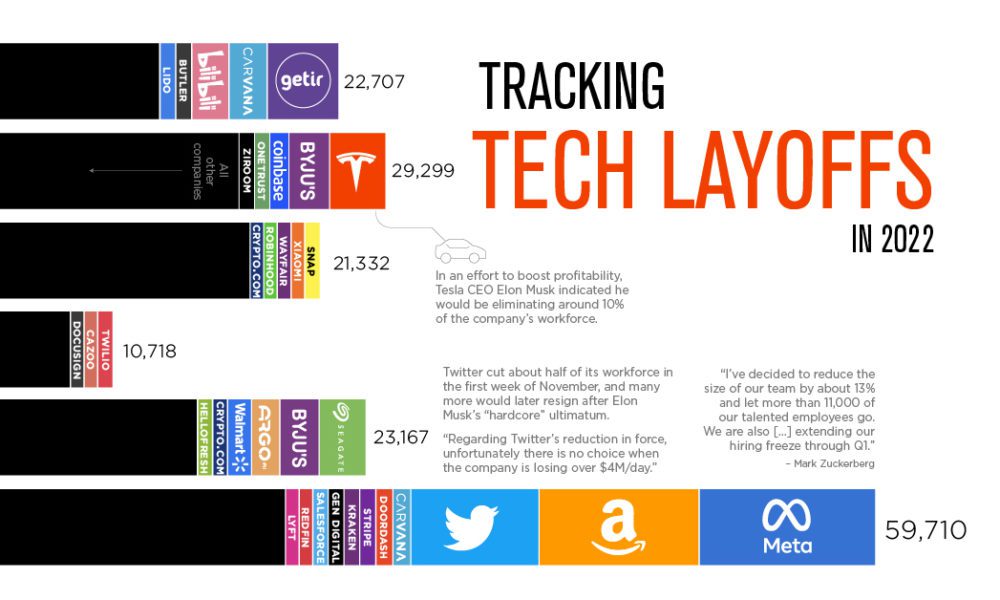Table of Contents
- Casualties of Big Tech layoffs find other companies are clamoring to ...
- Tech job layoffs in 2022 rose more than 10 times over 2021 - SiliconANGLE
- Companies that announced Major Layoffs and Hiring Freezes | Intellizence
- Company layoffs: Dispelling 4 common myths (Updated 2024) | Culture Amp
- Thousands face layoffs in imperialism’s “Crown Jewel” high tech sector ...
- Visualizing Major Layoffs At U.S. Corporations
- Here’s What the Public Thinks of Recent Tech Layoffs – and What They ...
- Infographic: Tracking the Big Tech layoffs in 2023, CIOSEA News, ET CIO SEA
- 483 best Layoffs images on Pholder | Superstonk, Antiwork and ...
- Tech Layoffs: More than what meets the eye | Purple Quarter



The Layoff Landscape: An Overview


Some of the most notable layoffs in recent times include:
- Amazon: 18,000 employees laid off
- Microsoft: 10,000 employees laid off
- Google: 12,000 employees laid off
- Facebook: 11,000 employees laid off

Industry-Wide Layoffs: A Deeper Dive


The reasons behind these layoffs are multifaceted, but some common factors include:
- Automation and AI adoption
- Global economic uncertainty
- Shift to remote work and reduced office space
- Company restructuring and cost-cutting measures

Visualizing the Layoffs: A Data-Driven Approach
To better understand the scope and impact of these layoffs, we can turn to data visualization. By analyzing the numbers and trends, we can gain a clearer picture of the layoff landscape.Some key statistics include:
- Over 150,000 employees laid off in the U.S. in the past year alone
- The technology sector accounts for over 50% of all layoffs
- The average layoff affects over 1,000 employees per company
As we move forward, it will be essential to monitor the situation closely and explore strategies for mitigating the impact of layoffs on employees and communities. By working together, we can build a more resilient and adaptable workforce, equipped to thrive in an ever-changing corporate landscape.
Note: This article is for general information purposes only and is not intended to be taken as professional advice. The statistics and data mentioned in this article are subject to change and may not reflect the current situation.